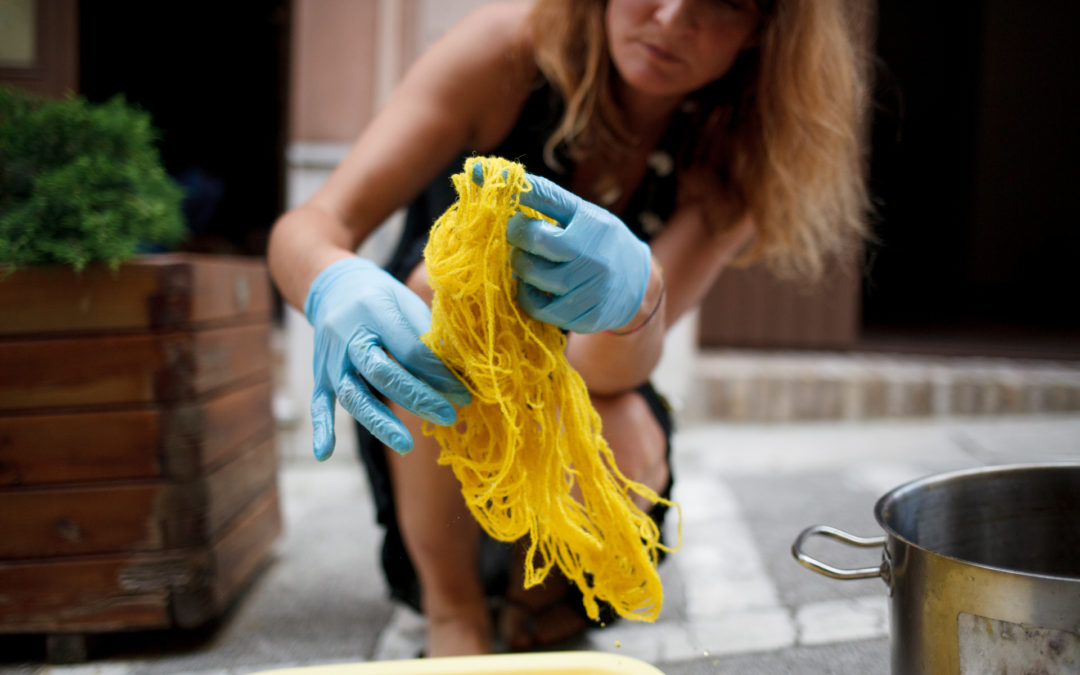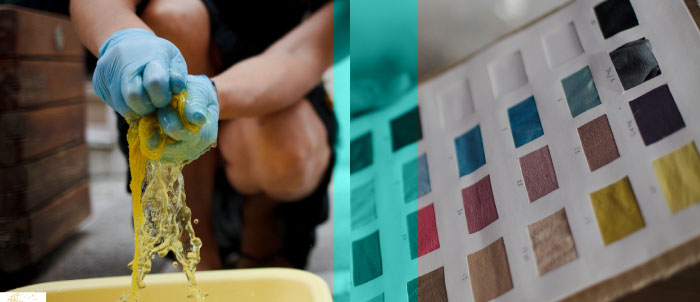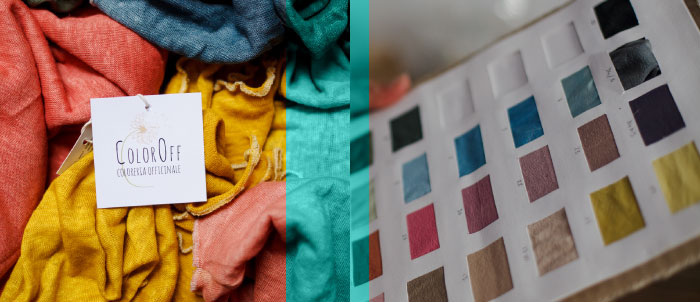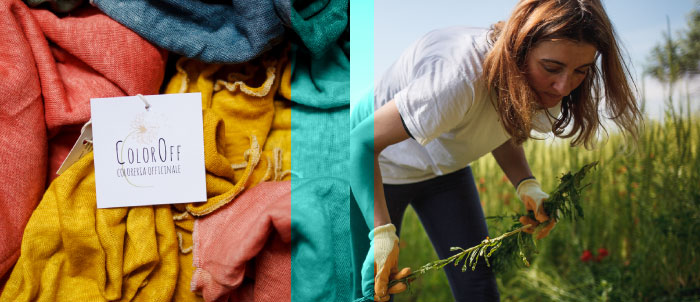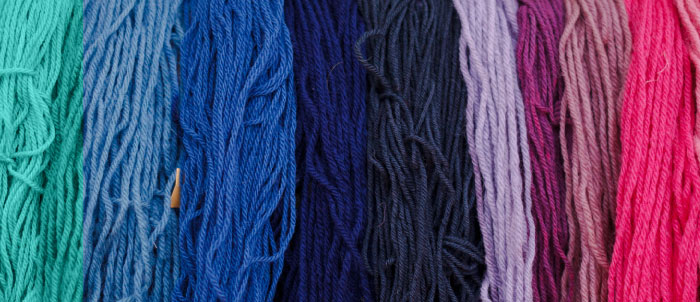COLOROFF
BUSINESS: ColorOff
ADDRESS: Piazza E. Medi 4, Belvedere Ostrense (Ancona)
EMAIL: sandraquarantini@gmail.com
FACEBOOK PAGE: coloroff.it
“ON CAMPUS” COURSE: ReStartApp 2015
I grow Reseda, the plant from which the yellow dye is obtained. I am the only one to grow it in Italy, and for three years I have been experimenting in order to find the best method, while continuing my research activity. I am a molecular biologist and before participating in ReStartApp I worked at the University. I own a farm in the Marche Region, where I dye garments and yarns.
Sandra Quarantini
Sandra produces yellow dyes in the Marche Region. She does it by growing Reseda, a dyeing plant – “I am the only one in Italy” – she says. She cultivates a hectare of land in Belvedere Ostrense, just over twenty kilometres far from Senigallia and the Adriatic coast.
Sandra Quarantini was born in Brescia in 1981. She moved to this village, at an altitude of 250 metres above sea level, in 2016, just after winning the third start-up award at the residential course ReStartApp 2015. «I am a molecular biologist and have a PhD in Biotechnologies. When I enrolled in the ReStartApp course I had just come back from a postdoctoral research project in Turkey and I lived in Trentino-Alto Adige. I was writing about new projects, one in particular on the use of hemp as a yarn, when I discovered the universe of dyeing plants and immediately fell in love with it». Besides Reseda, the most common dyeing plants are woad (Isatis tinctoria), from which blue is obtained, and madder (Rubia tinctorum), to make red.
since the mid-1980s.
Natural dyes have been produced for centuries. The most common vegetable dyes are extracted from: Rubia tinctorum L. (rose madder), Reseda luteola L. (yellow weed or dyer’s weed), Haematoxylum campechianum L. (bluewood or campeachy tree, among others), Caesalpinia brasiliensis L. (Brazilian redwood), Alnus glutinosa (L.), and Gaertn (common alder).
Dyes are usually extracted by maceration or using hot water. Dyeing a garment using natural dyes takes at least 4 hours, the time needed to extract the dye from the plant – an activity that is strictly carried out manually – and allow it to evenly fix on the fibres. ColorOff cooperates with the holiday farmLa Campana, a farm that has grown Isatis tinctoria L. (better known as woad), the plant from which blue is obtained, in the southern Marche Region
Sandra’s business’s name is ColorOff, which stands for “Coloreria Officinale” (Officinal Dyeing Factory). Indeed, besides “growing colours”, Sandra also dyes fabrics. «To do it at best – she explains – it is important to know the chemistry of dyes, to know how to extract the pigment from the plant and how to fix the natural dye to the fibre you are dyeing – be it silk, cotton or wool. This means that I have not given up the sector in which I qualified, quite the contrary – continues Sandra – I am convinced that what I am doing at the moment is just, literally, field research: I grow a plant that no one knows, and for three years now I have been experimenting to find the best way to do it».

